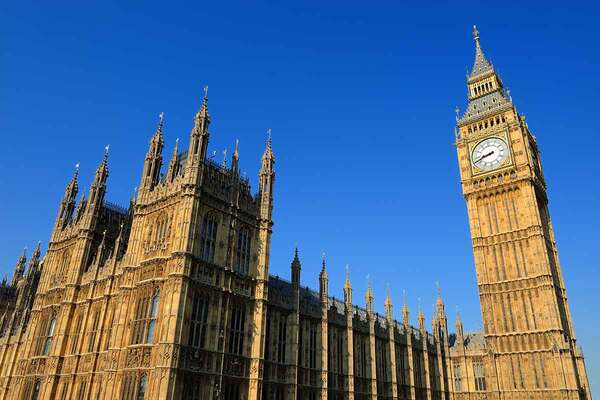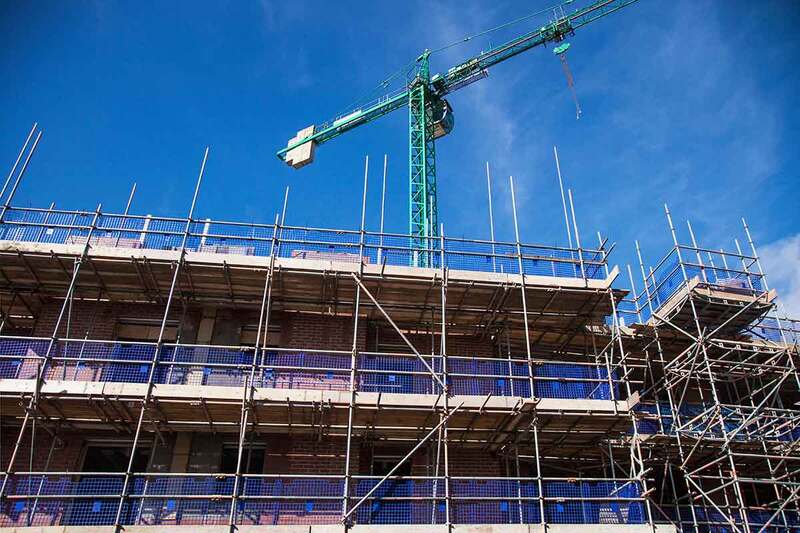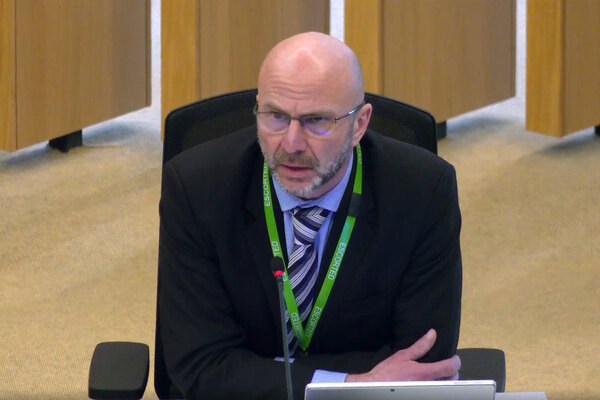You are viewing 1 of your 1 free articles
The Levelling Up and Regeneration Bill: key changes for housing
Yesterday the government published its Levelling Up and Regeneration Bill, which will bring forward policies outlined in the planning and levelling-up white papers. Lucie Heath outlines the biggest changes for the housing sector
On Tuesday, the Queen’s Speech confirmed that a Levelling Up and Regeneration Bill will be included in the government’s legislative agenda for the next 12 months.
Yesterday ministers published the bill, which contained a number of key important changes for the housing sector.
Alongside implementing many of the proposals outlined in February’s Levelling Up White Paper, the bill also brought forward a number of ideas from 2020’s controversial Planning White Paper.
While the most radical parts of the Planning White Paper, such as the introduction of a zonal planning system, have now been abandoned, one crucial proposal remains: a new Infrastructure Levy to replace Section 106.
Here, Inside Housing outlines how the new levy will work, alongside all the other key housing and planning changes that will be brought in as part of this new legislation.
The Infrastructure Levy
The Levelling Up and Regeneration Bill sets out the framework for a new Infrastructure Levy, which the government has said will largely replace the current system of obtaining developer contributions for infrastructure and affordable housing.
As set out in the bill, the new levy will be charged on the value of property when it is sold and applied above a minimum threshold, with levy rates and thresholds being set locally by planning authorities. The rates must be set as a percentage of gross development value rather than the current Community Infrastructure Levy, which is based on floorspace.
Ministers said they are following this approach as they believe it will allow developers to price the value of contributions into the value of land. It will also remove the need for obligations to be renegotiated if the gross development value is lower than expected, while allowing local authorities to share in the uplift if gross development values are higher than anticipated, ministers said.
Social landlords have previously raised concerns about the introduction of such a levy and asked questions around whether the mechanism will be able to secure onsite affordable housing if it is not chargeable until a development is sold.
In response, the government has included a framework in the bill to ensure the level of affordable housing currently gained through developer contributions will be the same or higher under the new levy and has that vowed these concerns will be fully addressed through regulations accompanying the new bill, which will be produced following consultation.
The government said these regulations will introduce a new ‘right to require’, which will allow local authorities to determine the portion of the levy they receive in kind as onsite affordable homes.
Further regulation will also consider how the levy will be applied to register provider-led schemes and will detail a “retained role” for Section 106 agreements to support the delivery of infrastructure on the largest sites, the government added.
Ministers vowed to introduce the new levy through a ‘test and learn’ approach, meaning it will be rolled out nationally over several years.
Community land auctions
In the documents accompanying the new bills, ministers confirmed they would bring forward legislation to enable the piloting of community land auctions. In pilot areas, landowners would be able to submit their land to local authorities in the process of developing their local plans, offering the council an option on the land at a price set by the landowner.
The planning authority would allocate the land within its local plan and then auction the development rights to a successful bidder. The difference between the option price offered by landowners and the price offered to develop allocated land will be retained by local authorities for the benefit of local communities.
Further planning changes
The government finally confirmed yesterday that plans to introduce a zonal planning system, which would designate some areas where planning permission would automatically be granted, have been abandoned. However, the new bill does bring forward a number of other less controversial proposals that were included in the Planning White Paper consultation.
This includes giving local plans more weight in the planning application decision-making process. This effectively means there must be strong reasons to override it for developments. The same weight will be given to other parts of an authority’s development plan, such as mineral and waste plans and community-led neighbourhood plans.
In order to speed up the process of developing local plans, policies on issues that apply in most areas, such as general heritage protection, will be set nationally.
Digital powers have also been included in the bill in a bid to allow more standardised and reusable data to inform plan-making.
Meanwhile, new ‘local plan commissioners’ could be deployed to support or ultimately take over plan-making if local planning authorities fail to meet their statutory duties.
The bill will also include new ‘street vote’ powers that will allow residents on a street to bring forward proposals to extend or redevelop their properties, with the proposals then being put to a referendum of residents on the street to determine if they should be given planning permission.
Ministers have also signalled an intention to remove the requirement for authorities to maintain a rolling five-year supply of deliverable land for housing if their local plan is up to date.
Regulations will be updated to set clear timetables for plan production, with the expectation that they are produced within 30 months and updated at least every five years, the government said.
Creating beautiful places
In 2018, Conservative ministers placed a renewed emphasis on the concept of ‘beauty’ in the development process when it established its Building Better, Building Beautiful Commission.
The Levelling Up and Regeneration Bill aims to bring forward some of the recommendations from the commission, including the requirement that all local areas should produce a design code to inform planning decisions.
The bill will also give assets, such as scheduled monuments, registered parks and gardens, World Heritage Sites and registered battlefields, the same statutory protection in the planning system as listed buildings and conservation areas.
Developers will also be required to produce ‘environmental outcome reports’ when submitting new planning applications, replacing previous reports mandated by the European Union.
Ministers also vowed to “pursue options to make the green belt even greener”, but were silent on the Building Better, Building Beautiful Commission’s recommendation that every home has access to a fruit tree.
Regeneration
To support the regeneration of brownfield areas, the bill included changes to compulsory purchase powers. This includes allowing compulsory purchase orders to have an expiry period of more than three years and increasing the flexibility on the date an acquiring authority becomes the legal owner of land.
Ministers also revealed they were exploring the potential for a review of compulsory purchase law with the Law Commission.
The bill also makes provision for a new type of locally led ‘urban development corporation’, which will be accountable to local authorities rather than the secretary of state.
Housing market reform
The Levelling Up and Regeneration Bill aims to rebalance power within the housing and land markets by giving the government the power to collect and publish data on land contractual arrangements. Ministers said this will be used to “expose anti-competitive behaviour by developers and help local communities to better understand the likely path of development”.
The government will also be given the power to collect additional ownership, funding and transaction data, in a bid to better understand who owns and controls land and property in England and Wales.
New commencement notices will also be introduced when a scheme with planning permission starts on site, which ministers said will “address perceptions of ‘land banking’”.
Ministers said they are currently exploring what else can be done to support faster build out.
Devolution
As first promised under the Levelling Up White Paper, the government intends to make sure every area of England that wants one can have a devolution deal, including a long-term funding settlement, by 2030.
The bill paves the way for this by creating a new type of combined authority model – ‘combined county authorities’ – to be made up of upper tier local authorities (county councils and unitary authorities) only. It is envisaged that this will particularly benefit rural areas.
Meanwhile, the process for establishing and amending new and existing combined authorities will be simplified in a bid to speed up the process of devolving new powers.
Sign up for our development and finance newsletter
Already have an account? Click here to manage your newsletters













